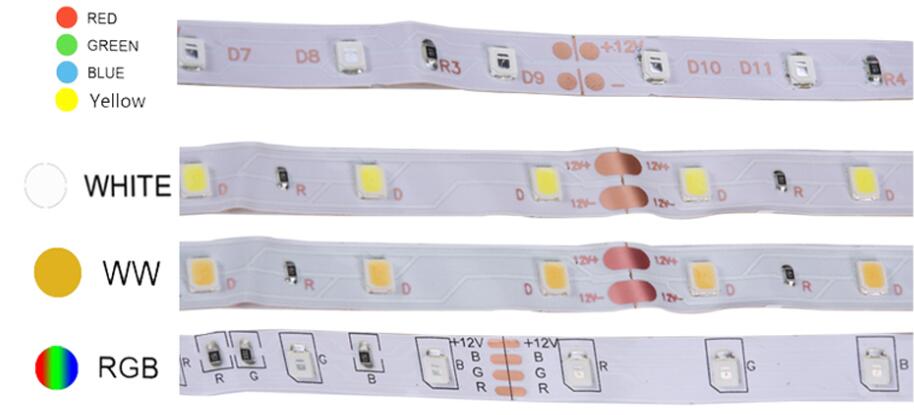Nine factors affecting the price of LED Strip
2020-09-11
When buying LED strip, don't just pay attention to the price. Comprehensive assessment from the following aspects, in order to buy the most cost-effective LED strip.
1. Chips used in LED strip: chips include domestic and Taiwanese chips, as well as imported chips (including American chips, Japanese chips, German chips, etc.). The price of chips varies greatly. At present, the most expensive is the American chip, followed by the Japanese chip and the German chip, and the moderately priced Taiwanese chip. What chip is used? What kind of effect do you want to achieve? Before purchasing, you must be aware of it.
2. LED packaging: divided into resin packaging and silicone packaging. The price of the resin package is cheaper, because the heat dissipation performance is slightly worse, and the others are the same. The silicone package has good heat dissipation performance, so the price is slightly more expensive than the resin package.
3. The consistency of LED color: At present, there are many packaging factories in China, and there are thousands of large and small. Of course, there are strengths and weaknesses. There are many small packaging factories that do not have spectroscopy and color separation machines, so they either do not perform spectroscopy or are outsourced, so it is difficult to guarantee the quality. LEDs that have not undergone light and color separation have poor color consistency, and the effect after lighting on the LED strip is not so good, of course, the price difference is relatively large.
4. LED welding effect: The assembly of LED strip is divided into manual welding and machine welding. Manual welding is to use a soldering iron, and the most primitive method is used for welding. The products produced by this operation method have an ugly appearance (inconsistent solder joint sizes, many flux residues, unsmooth solder joints, burnt LED packages, etc.); second, electrostatic protection measures are not good, and many LED chips are broken down. Causes the phenomenon of dim light or no light when power on. Machine soldering is different. Machine soldering uses reflow soldering. Not only does the product after soldering look beautiful (the solder joints are the same size, the solder joints are smooth, there is no flux residue, and the LED package is intact), but the chip will not be burned by static electricity. Bad phenomenon. At the same time, the position and direction of the LED are more beautiful. This can be seen directly from the appearance.
5. FPC material: FPC is divided into rolled copper and copper-clad. The copper-clad plate is cheaper, and the rolled copper is more expensive. The pads of the copper-clad board are easy to fall off when bent, but the rolled copper will not. The specific FPC material to be used depends on the purchaser's decision according to the use environment.
6. Has FPC passed environmental protection certification, UL certification? Is there a patent for LED? Some are certified and patented, and the prices are more expensive, while none are cheaper.
7. LED brightness: the price of LEDs with different brightness is different, the price of ordinary brightness and high brightness LED are quite different. Therefore, when purchasing, you must clearly know what kind of brightness you need, so that you can accurately position your products.
8. The color of LED: different colors and different prices. White and green are more difficult to match and separate, so the price is higher than other colors; red, yellow, blue and other colors are easier to separate and have better consistency, so the price is slightly cheaper. Special colors such as purple and brown are the most expensive due to color matching.
9. LED size: LEDs of different specifications and sizes have different prices. For example, 5050 is more expensive than 2835.






